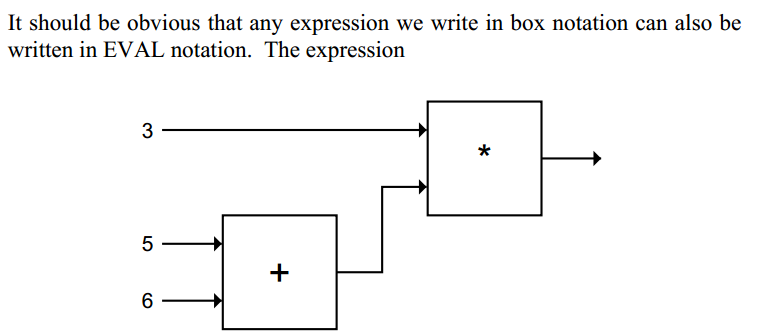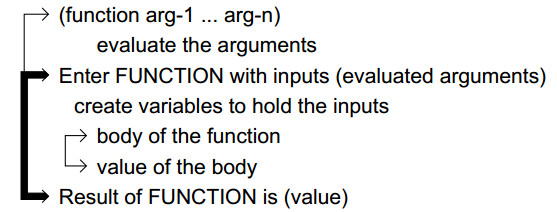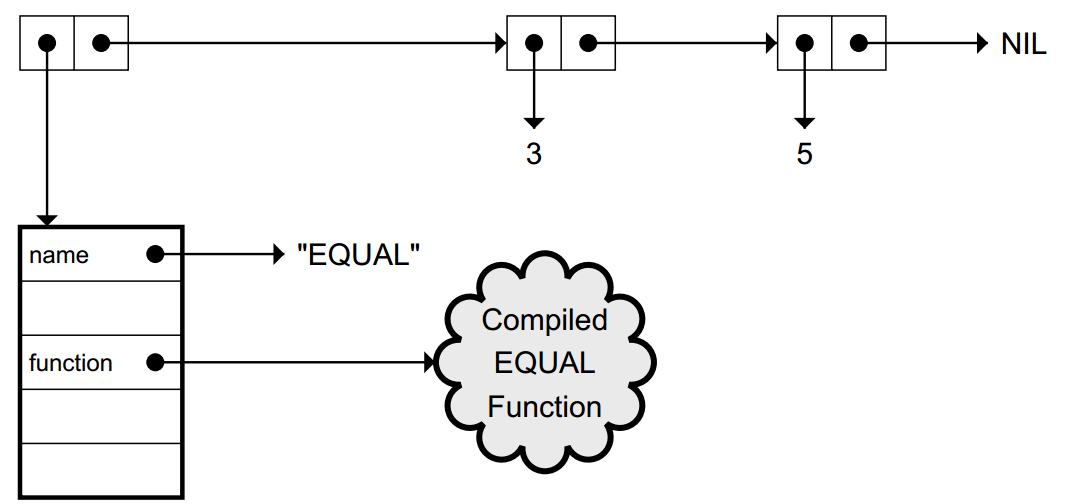EVAL Notation
@函数式编程初探 in EverNote-Lisp
In Lisp,functions are data
EVALNOTATION CAN DO ANYTHING BOX NOTATION CAN DO

- Evaluation Rule for Numbers, T, and NIL: Numbers, and the symbols T and NIL, evaluate to themselves.
- Evaluation Rulefor Lists: The first element of the list specifies a function to be called. The remaining elementsspecify arguments to the function. Thefunction is called on the evaluated arguments.
- Evaluation Rule for Symbols: A symbol evaluates to the value of the variable it refers to.
macro function 宏函数
(defun funciont_name (argument list) (body))
(defun average (x y)
(/ (+ x y) 2.0))
Variables are not symbols; variables are named by symbols. Functionsare also named by symbols.
Evaltrace notation

USINGSYMBOLS AND LISTS AS DATA
unassigned variable error (defun riddle (x y) (list ’why ’is ’a x ’like ’a y))
(riddle ’raven ’writing-desk) ⇒
(why is a raven like a writing-desk)
Lists also need to be quoted to use them as data
(first (we hold these truths))
⇒ Error! WE undefined function.
(first ’(we hold these truths)) ⇒ we
example
(+ 1 2) ⇒ 3
’(+ 1 2) ⇒ (+ 1 2)
(oddp (+ 1 2)) ⇒ t
(oddp ’(+ 1 2)) ⇒ Error! Wrong type input to ODDP.
making list
’(foo bar baz) ⇒ (foo bar baz)
(list ’foo ’bar ’baz) ⇒ (foo bar baz)
(cons ’foo ’(bar baz)) ⇒ (foo bar baz)
old style quote = '
’’foo ⇒ ’foo also written (quote foo)
(list ’quote ’foo) ⇒ (quote foo) also written ’foo
(first ’’foo) ⇒ quote
INTERNALSTRUCTURE OF SYMBOLS
(EQUAL 3 5)

lambda
LAMBDA is not a function;it is a marker treated specially by EVAL.
lambda is the symbol for an anonymous function
(lambda (x y) (+ (* 3 x) (* y y)))
FUNCTIONSTHAT MAKE FUNCTIONS
It is possible to write a function whose value is another function
(defun make-greater-than-predicate (n)
#’(lambda (x) (> x n)))